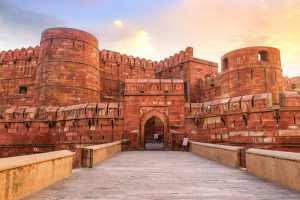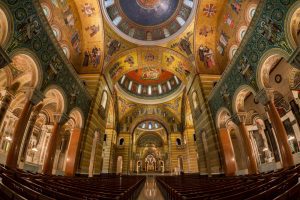If you’ve ever visited a temple, you know that this type of building is special. Even the ones that are no longer in use have distinct and serene auras. There are countless temples around the world, some ancient and some more modern. No matter where these intricate buildings are located or when they were built, all temples have one thing in common – they are used for spiritual or religious practices like prayer and worship.
Apart from this one common characteristic, temples’ form and function vary greatly. Many people picture Asia and thick jungles when they think about temples, and it’s true that there are large quantities of religious monuments and memorials on this continent. But temples are more widespread than you may think, and you’ll actually find many different types of temples on almost every continent on earth.
You can learn a lot about a religion by its temples, and many of these intricate buildings boast incredible details and stark imagery in addition to grand architecture and impressive (if not precarious) locations. Whether you’re hoping to visit some of the most famous temples on your next trip abroad or are simply curious about the differences between these iconic structures, keep reading to learn about 15 different types of temples.
Table of Contents
1. Mesopotamian Temples
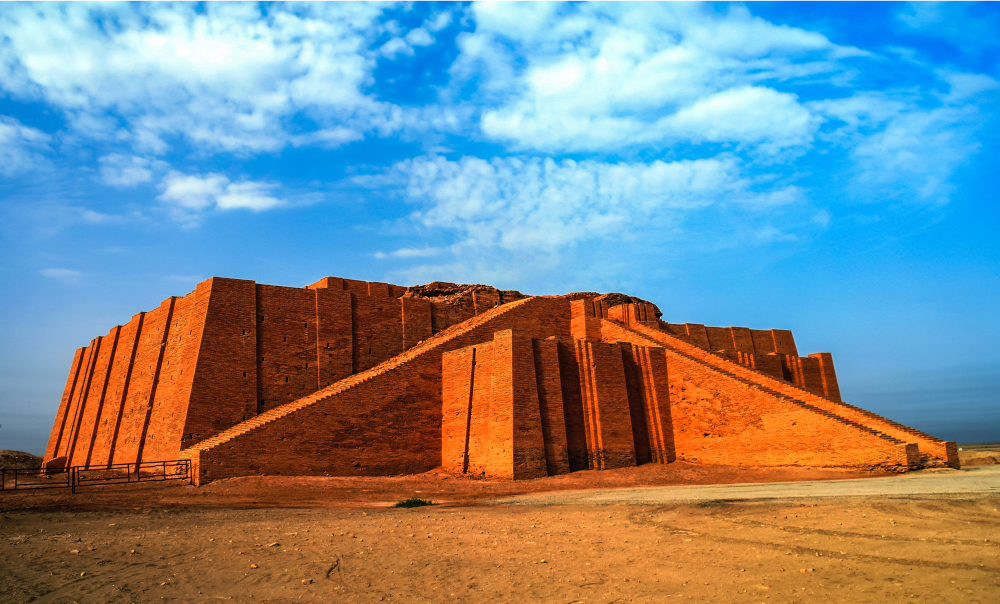
Some of the oldest temples in the world are the Mesopotamian Temples, found throughout the Mesopotamian region. This is a historic region located in the northern part of the Fertile Crescent, which today includes the country of Iraq and parts of Turkey, Syria, Iran, and Kuwait.
These temples were built by followers of the Mesopotamian religion, which is not practiced in current times. The religion saw several civilizations come and go before it became extinct itself, including the Sumerian, Akkadian, Assyrian, and Babylonian civilizations.
The religion was widespread before it was wiped out, and temples ranged in style and size throughout the region. One of the most common types of Mesopotamian temples was the ziggurat, a massive structure made out of sunbaked bricks. These large buildings were made with terraced steps and a flat upper terrace, which was used for either a temple or shrine.
These incredible structures were not accessible to just anyone, and most worshipers of the Mesopotamian religion were never allowed to step foot in the temple. The temples were built as a house for the gods, and only priests were allowed inside the ziggurats.
Unfortunately, but not surprisingly, few of these ancient structures have survived, though there are about 25 still left standing. The most well-preserved Mesopotamian temple is the ziggurat of Ur, located in present-day Iraq.
2. Ancient Egyptian Temples
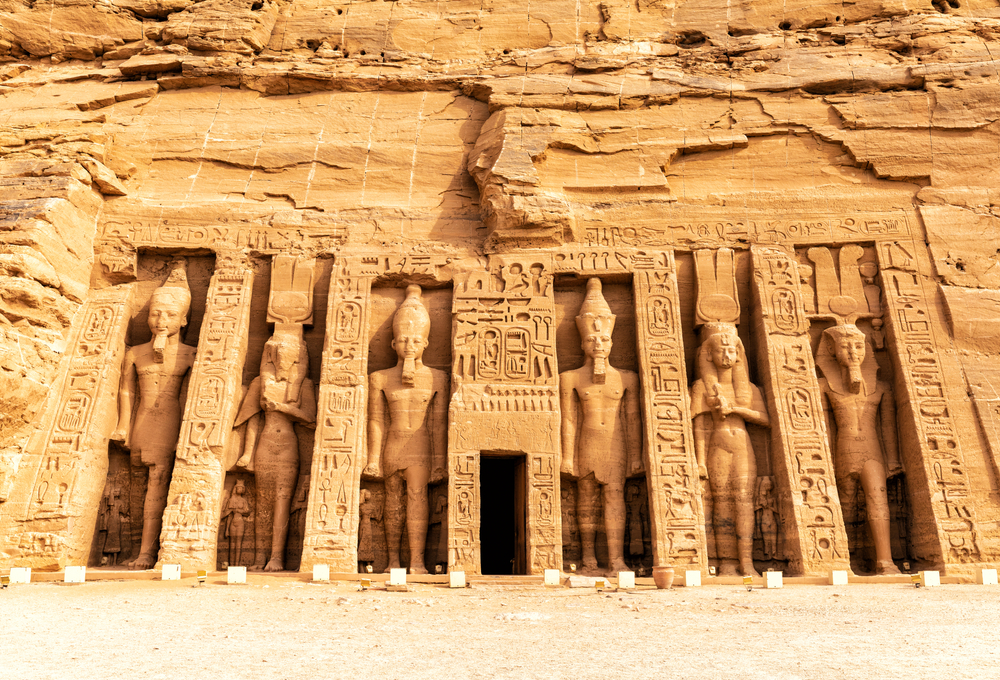
Not to be confused with the iconic pyramids in the same region, ancient Egyptian temples were created as a place for gods to reside on earth. Temples were a place for locals to interact with the gods and maintain “maat” – a concept of balance, truth, harmony, order, morality, law, and justice. These were the main ideals of ancient Egyptian society, and through rituals and ceremonies held at the temple, these beliefs were upheld.
Temples also held significant economic importance in ancient Egypt and were used to store and distribute grain. Temples (and the pharaohs who controlled them) often owned the land that surrounded them, and it is estimated that up to 33% of all arable land in ancient Egypt was under the control of temples. This area was rented out to local farmers, who produced everything from grain and fruit to livestock and wine. Temples also funded expeditions into the desert to search for honey, salt, wild game, and even precious minerals.
Mortuary temples were not uncommon either, and these buildings were constructed as a way to sustain the spirits of pharaohs in the afterlife. No matter what type of temple it was, these ancient buildings were constructed with perfectly symmetric walls and ceilings and ornate details like text, sculptures, low and sunken relief, and vividly colored paints.
3. Hindu Temples
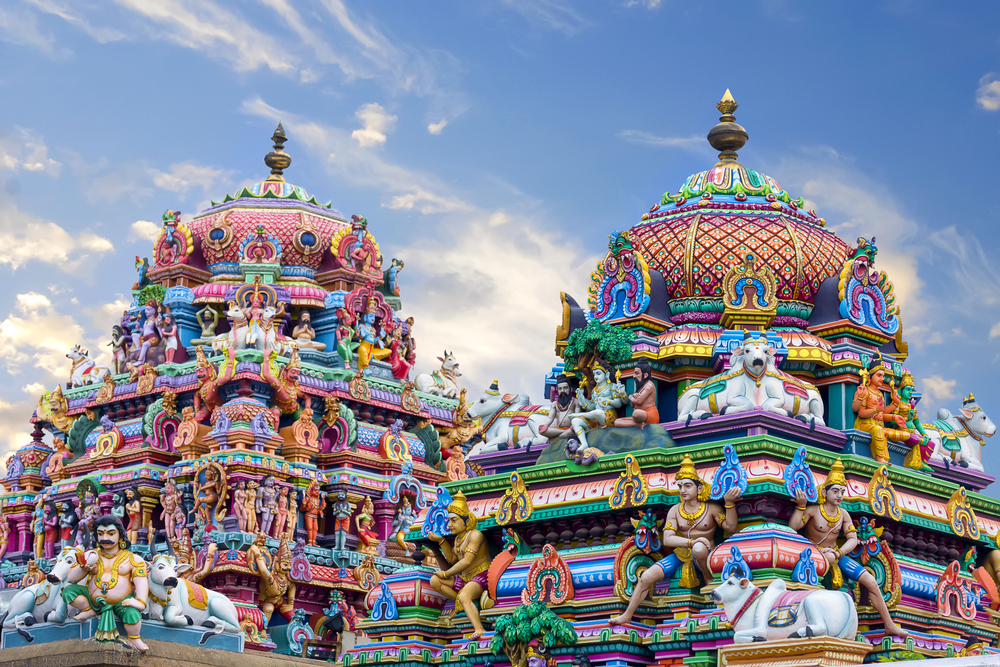
Hindu temples are among the most numerous temple types, with millions of these buildings located all around the world. India has the most Hindu temples, as this is where most Hindus have historically resided.
Like many other temples, Hindu temples are used to bring humans and gods together. Historically, they have also been used as important social, intellectual, artistic, and economic structures. Just like ancient Egyptian temples, Hindu temples once managed the regions that surrounded them and used donations from their parishioners to fund irrigation projects, post-disaster relief, land reclamation, and much more.
These massive structures date as far back as the bronze age, and modern temples are still being constructed. Hindu temples are extremely symbolic and feature paintings, sculptures, engravings, and even mathematical principles in their decorations.
While all these ornate buildings have some common aspects, Hindu temples vary greatly in style and architecture between three main types: Nagara, Dravida, and Vesara. These different types of temples evolved in different regions of India, and there are even subtypes of these three distinct temple styles. The Nagara temples are located in India’s northern region between the Himalayas and the Vindhyas, the Dravida style temples can be found in the country’s southern region between the Krishna and Kaveri rivers, and the Vesara style temples are a combination of the first two styles and are located between the Vindhyas and the Krishna River.
4. Buddhist Temples
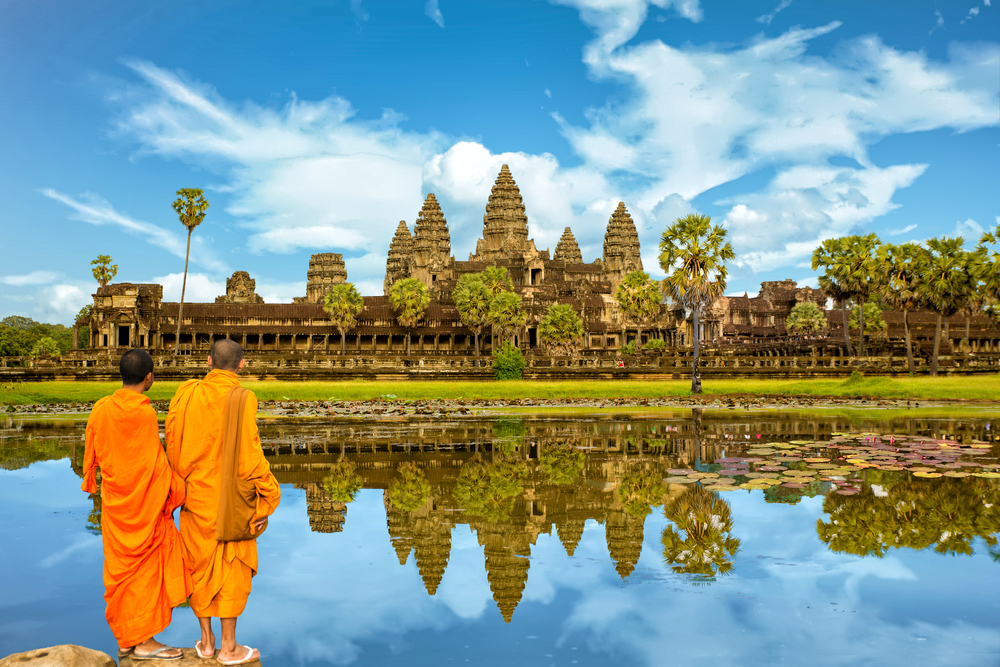
Traditionally designed to reflect both inner and outer peace, Buddhist temples also represent the pure land and environment of a Buddha. While the architecture and style of these temples vary immensely by region, each Buddhist temple is designed to celebrate five elements: earth, wisdom, fire, water, and air.
The Buddhist religion was founded in northern India and was built around principles like the pursuit of nirvana and the Four Noble Truths. Today, there are about half a billion people who practice Buddhism, and Buddhist temples can also be found in Indonesia, Japan, Thailand, Myanmar, Bhutan, Laos, Vietnam, and many other places around the world. Regardless of the location or style, all Buddhist temples are built for quiet meditation and reflection.
Temple etiquette is quite universal despite location, and visitors should keep noise to a minimum, cover their shoulders and knees while inside the temple, and remove their shoes before entering. Photography is usually prohibited inside temples, especially when monks are worshipping.
5. Jain Temples
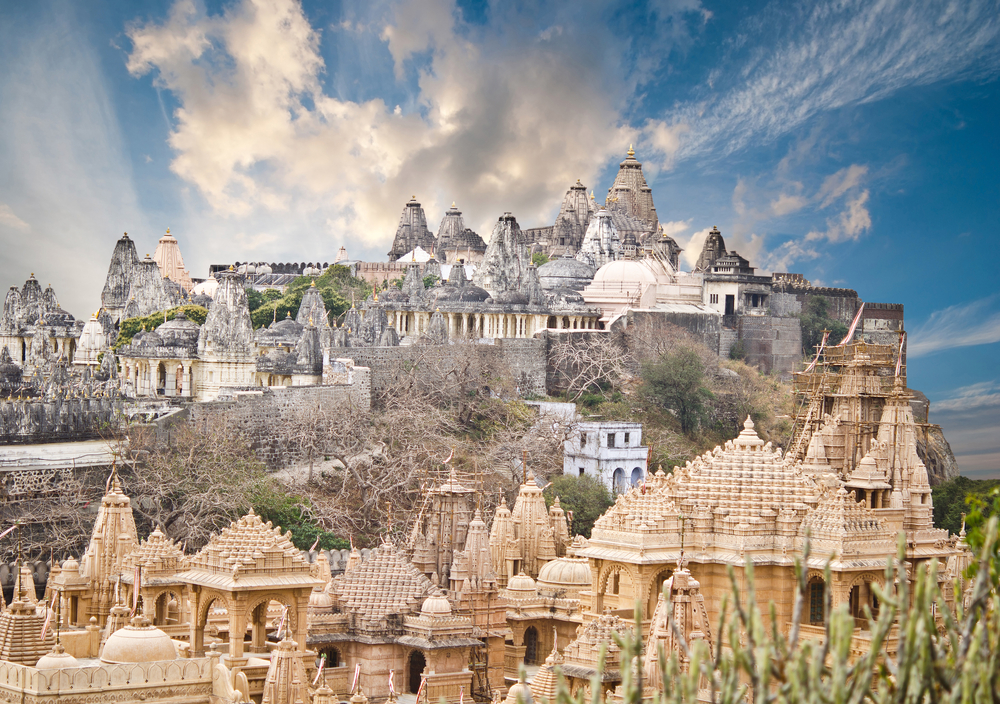
One of the lesser-known temple types is the Jain temple, also known as a Derasar. This type of temple is a place of worship for those who follow Jainism, an ancient Indian religion. The architectural style of Jain temples is similar to that of Hindu and Buddhist temples, though designs vary by region and reflect the time period in which they were built.
The three main pillars of the Jain religion include ahimsa (non-violence), anekantavada (many-sided reality), and aparigraha (non-attachment). The temples themselves are defined by breathtaking pillars, intricate designs, and carved ceilings – these remarkable structures never cease to amaze visitors.
Jain temples have three specific purposes. Shikar-bandhi temples are public places of worship, Ghar Jain temples are private house shrines, and a Tirtha is a holy pilgrimage site for the Jain religion. No matter which type of temple you are visiting, be sure to observe proper etiquette, which includes removing any footwear, refraining from chewing anything while inside the temple (like gum or mints), turning off your mobile phone, and wearing clean clothes.
While Jainism is mostly practiced in India, there are a few temples scattered in other parts of the world including England, Pakistan, Belgium, and the United States.
6. Ancient Greek Temples
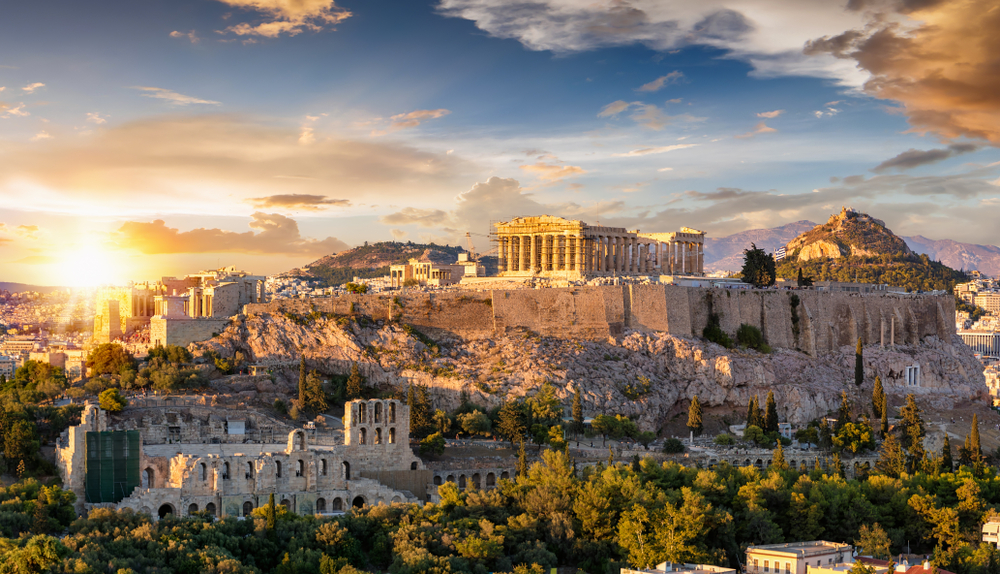
Although no longer in use, ancient Greek temples are some of the most famous structures in the world. Greek temples were built to house statues of various deities, but the buildings themselves were not actually the most important part of worship in ancient Greece. The area just outside of the temple is where most of the action took place, and by action, we are referring to the sacrifices and rituals performed to please whichever deity the temple was dedicated to.
Greek temples were meticulously constructed with mathematical strictness and precision. The designs of these temples changed little throughout the centuries, and are characterized by a rectangular foundation, imposing columns, ornate pediments, and white stones or stucco. Ancient Greek architecture heavily influenced the surrounding kingdoms and can be seen in ancient structures in current-day Iran, Egypt, and all over Central Asia.
At the start of the Roman Empire, Greek Temples were closed down and converted into churches or destroyed altogether. Unfortunately, there are no ancient Greek temples left intact today, but there are still some remarkable remains to be seen around the world. Some of the most impressive include the Parthenon and the Caryatid Porch, both of which can be found in Athens.
7. Roman Temples
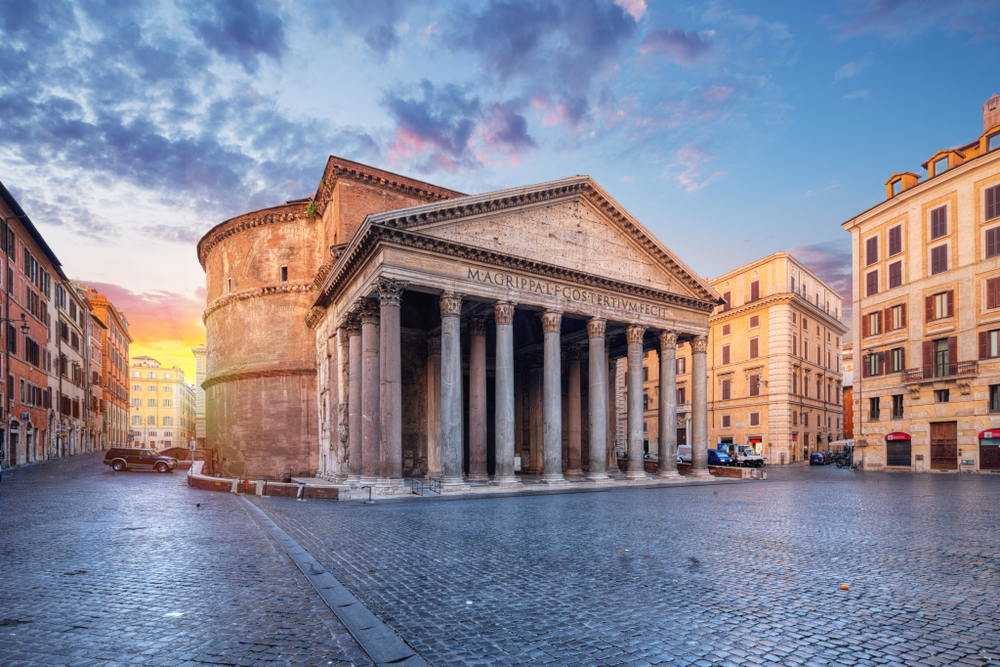
Roman temples are extremely similar to Ancient Greek temples, and this is true in terms of both form and function. Taking inspiration from the Etruscans and the Greeks, the ancient Romans constructed their temples with large columns, a triangular pediment, and a raised platform. Roman temples are unique in that they often had a circular form, an emphasis on the front of the building, and more stairs than ancient Greek temples.
Roman temples were just like the ancient Greek temples in one way, however. The area outside of the temples was dedicated to sacrifice, while the inside of the buildings was meant for shrines of a specific deity. There was often some extra storage space in these buildings as well, and these rooms were used to house equipment and offerings.
The temples of ancient Rome managed to survive at a much better rate than those of ancient Greek, and there are still some impeccably preserved Roman temples standing to this day. Most of the remaining temples can be found in southern Europe and northern Africa, though the Roman Empire was massive and the remains are quite widespread.
8. Zoroastrian Temples
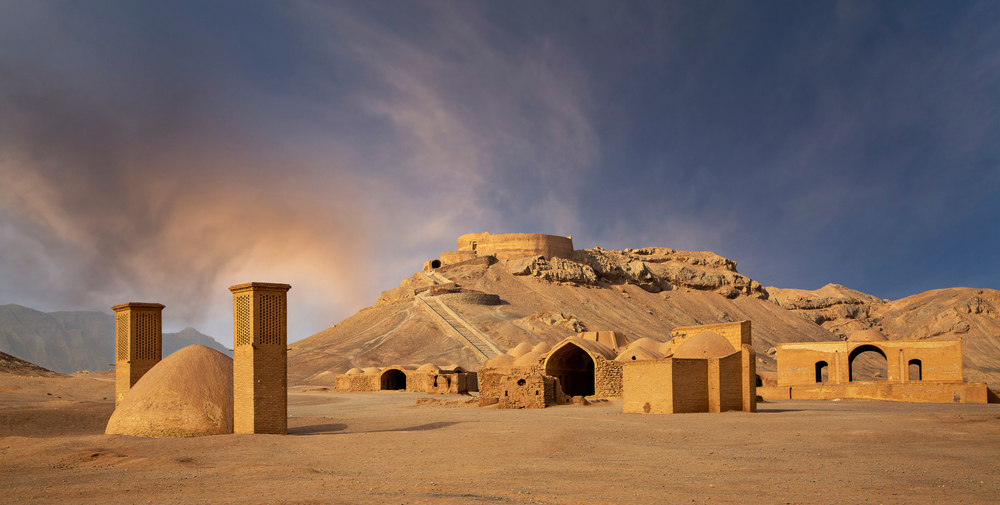
Also known as fire temples, ataskada, and pyratheia, Zoroastrian temples are some of the most unique types of temples in the world. Zoroastrianism is an ancient Persian religion (which is now part of modern-day Iran) that is based on the tradition of keeping a fire burning throughout the life of the head of the household. This tradition was converted into a religious practice around 1500 BC and the Zoroastrian religion was centered around the legend of the Three Great Fires.
These fires (the fires of the warriors, priests, and farmers) were said to have been around since creation and have been kept burning by priests throughout history. The Zoroastrians organize flames into 16 different categories, and the everlasting flames that burn in their temples are a combination of all the different types.
Much is unknown about the history of this religion, mostly because many of the temples were destroyed in the 7th and 8th centuries CE. Persian culture was repressed, and many Zoroastrians fled to India. In fact, India is where you’ll find most of the fire temples today, though there is still one left in Iran whose fires are said to have been burning since 470 CE.
9. Chinese Temples

Unlike some of the other temples on our list, Chinese temples are structures that serve as a house of worship for a variety of religions, including Taoism, Confucianism, Buddhism, and Chinese folk religion. Apart from temples for certain religions, China also has ancestral temples for certain families and clans, temples for specific gods of different cities and towns, and palace temples that are made up of multiple buildings.
While these temples serve many different purposes and religions, most of them were built during the ancient era of imperial China and thus have very similar architecture. The traditional Chinese temple architecture is characterized by an elevated platform and multiple stories constructed from timber and bricks with glazed ceramics for the stacked roof and other decorations. Classic Chinese temples also tend to feature overhanging eaves, vibrant color pallets, and opulent details throughout.
It’s not uncommon to see mythical beasts and deities hanging out on the rooftops of Chinese temples, and some of the most common of these include dragons and qilins.
Obviously, most Chinese temples are located inside of mainland China, but there are also a few of these temples in Taiwan and in Chinatowns around the world, thanks to the immigrants who bring their traditions with them.
10. Sikh Temples
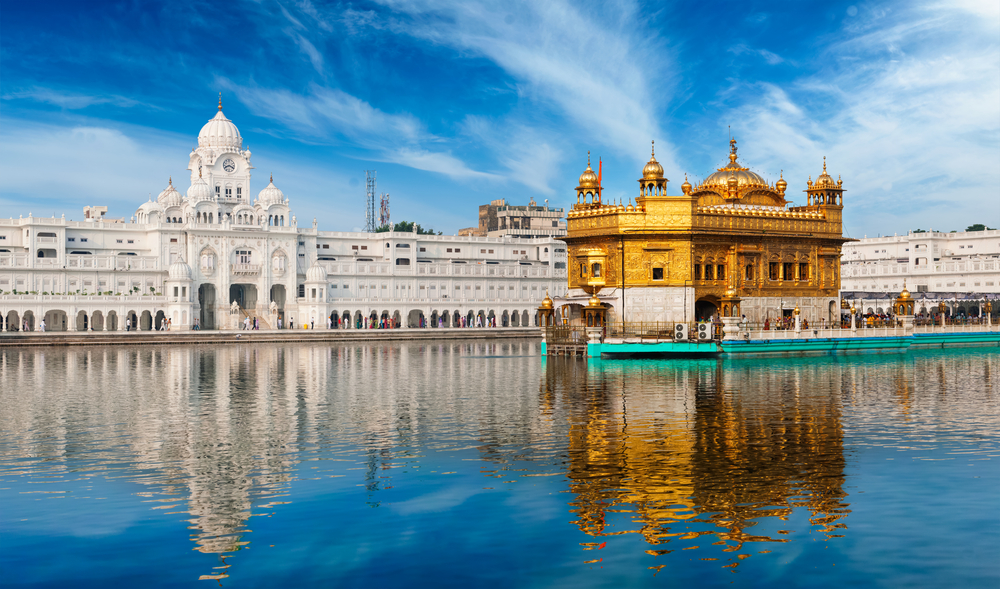
Sikh temples are a place of worship for followers of the Sikh religion, and they are often referred to as gurdwaras or Gurdwara Sahib. These religious temples are much more than a place to worship, however. They also offer free food to visitors, and many have classrooms, medical rooms, libraries, nurseries, playgrounds, and gift shops.
While there is no overarching architectural plan that Sikh temples must follow, you can recognize them from far away thanks to the tall poles that jut up from the building. The first gurdwara can be traced back to 1521, and this temple was built on the banks of the Ravi River in current-day Pakistan.
Since then, the religion has gained many followers, and there are Sikh temples all over the world (though most are located in India). People who practice Sikhism put a large emphasis on community, and therefore throughout their lives, Sikhs must offer to support worthy causes that will benefit those in their community. Meditation is also an important part of this religion, as is the study of holy scriptures and voluntary service.
While gurdwaras are usually a place for Sikhs to come and worship and anyone is allowed to enter these temples. Whether you’re in need of help, want to learn more about the religion, or just observe one of their celebrations, you’ll be welcomed with open arms.
11. Mesoamerican Temples
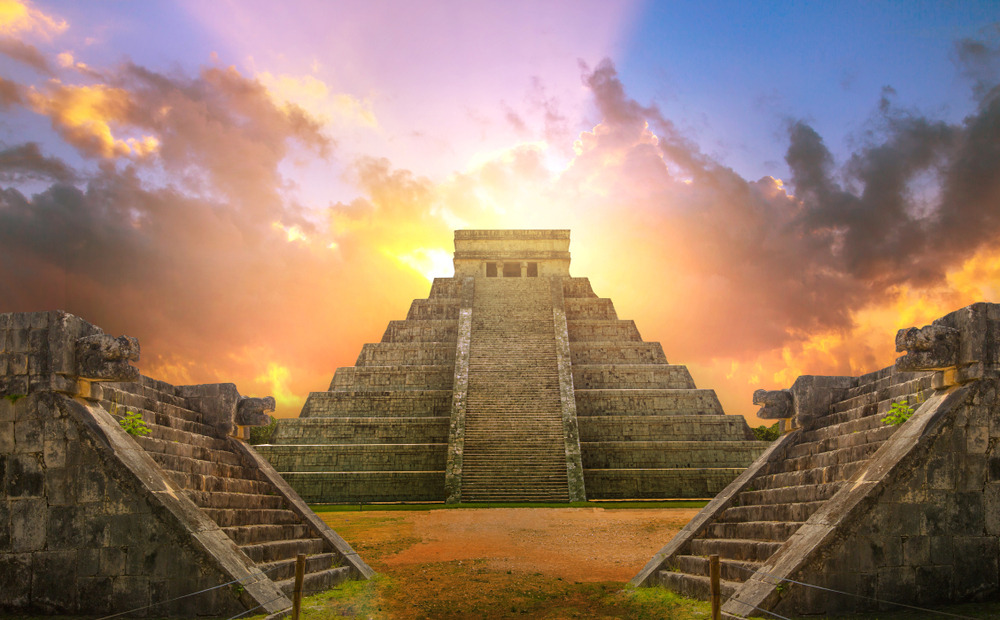
Although reminiscent of the great ancient Egyptian pyramids, Mesoamerican temples are actually more similar to Mesopotamian ziggurats than to ancient Egyptian temples or pyramids. Located mostly in modern-day central America, Mesoamerican temples date back to the pre-Columbian era and are still somewhat of a mystery to this day.
Many Mesoamerican temples have a triangular shape, though there are also some that are rectangular and circular. Ancient civilizations like the Aztec, Mayans, Teotihuacan, Toltec, and many others created these step pyramids that feature several flights of steep steps up to a flat temple where ritualistic ceremonies and sacrifices took place.
Cities were usually built around these grand temples, and while these communities are no longer inhabited, numerous ruins around Central America have been well preserved, especially those of the Mayan civilization.
While much remains unknown, efforts to understand the hieroglyphics left behind by these ancient civilizations reveal that the people who frequented these cities were extremely intelligent and can be credited with important discoveries that we still use today including mathematical systems, calendars, and astronomical systems.
The Mesoamerican temples were also adorned with fascinating art, from intricately carved steps and massive pillars to detailed depictions of Mesoamerican creation myths and sculptures located inside of the temples.
12. Jewish Temples
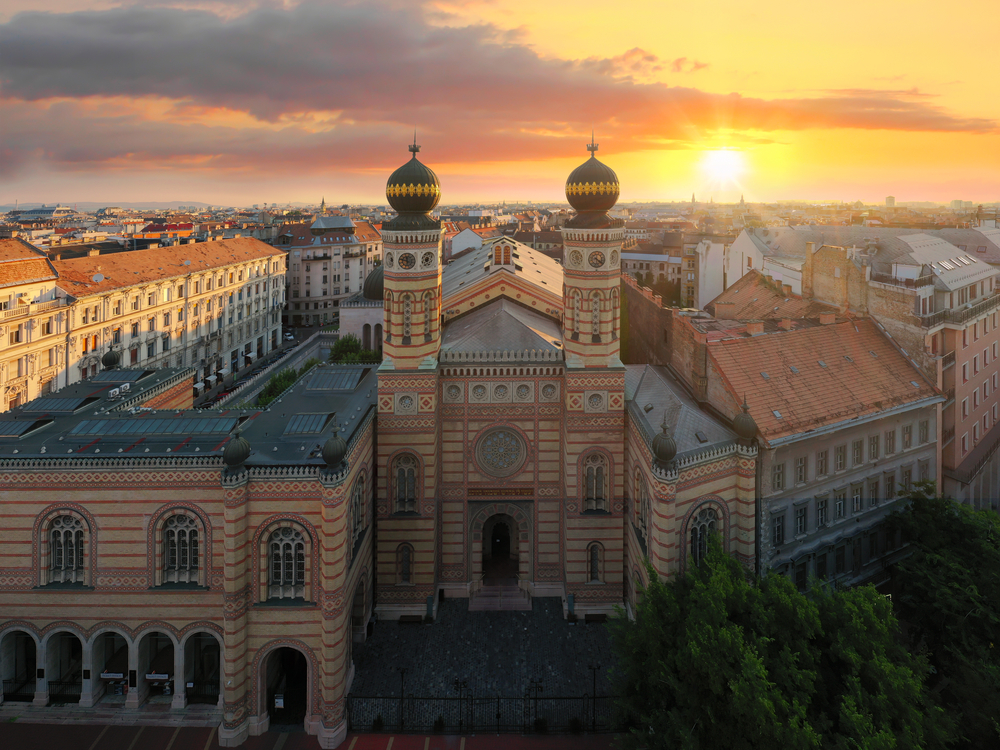
Also referred to as synagogues, or shuls, Jewish temples are extremely widespread around the world and consecrated places of worship for those who follow the Jewish faith.
There is no specific design plan a synagogue must follow, and for that reason, the architecture of these temples is quite unique. You’ll see influence from other religious architecture in synagogues and depending on where and when the temple was built, you may notice similarities to ancient Roman empire architecture, Chinese design, Mudejar plasterwork, Gothic Revival, Neoclassical, Neo-Byzantine, and Greek Revival style buildings (amongst others). Some of the most common features of Jewish temples include domes, arches, and towers.
The insides of these temples vary as vastly as the outsides, but one thing all synagogues have in common is that they contain a bimah, or platform, from which the Torah, or holy book, is read. There are many different denominations in the Jewish faith, and depending on the type of synagogue you enter, you may have to remove your shoes, sit on the floor, and/or separate by gender.
In many Jewish communities, synagogues are more than just a place for worship, they also provide facilities like classrooms, libraries, catering halls, kosher kitchens, and daycare centers.
13. Christian Temples
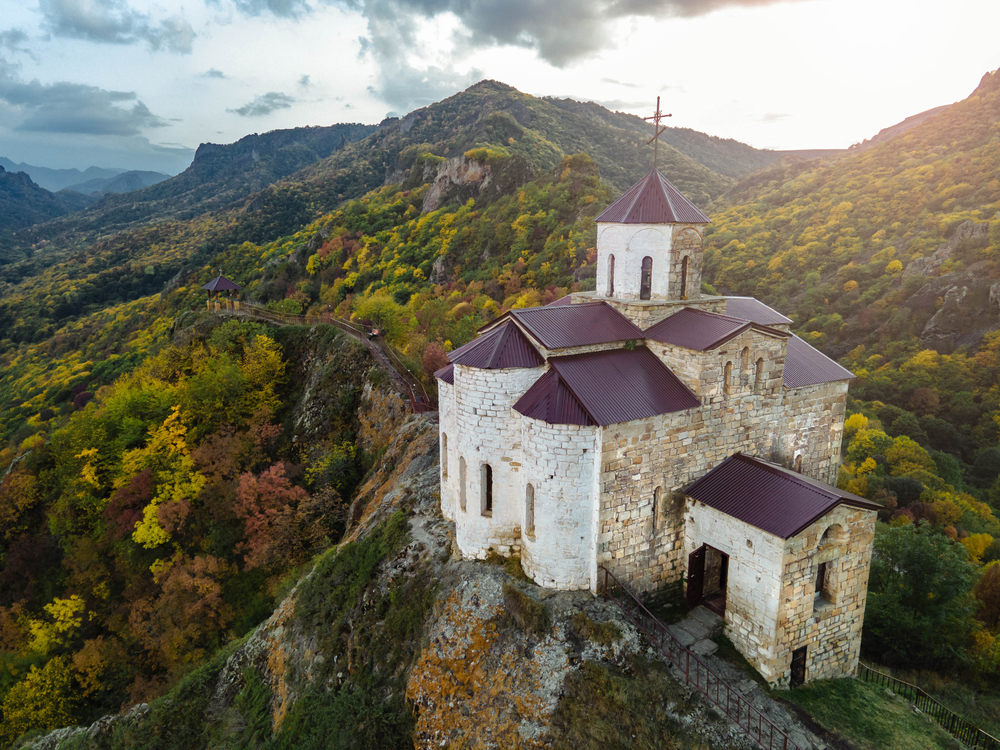
More commonly known as churches and cathedrals, Christian temples are some of the most numerous houses of worship in the world. While the terms “church” and “temple” are technically interchangeable, in western society, “church” is the more commonly used word. Other words used to distinguish houses of worship in the west include chapel, basilica, and abbey.
Like the Jewish religion, Christianity has many different denominations, and therefore no overarching rule of how their temples (or churches) should be constructed. Even the smallest of towns throughout the western world boasts churches, and while some structures are more grandiose than others, the sheer number of Christian temples around the world is impressive.
No matter how a church is constructed or where it is located, it is recognizable by the symbol of Christianity that adorns the building both inside and out: the holy cross. Christianity has been around a lot longer than their temples, and the earliest Christians gathered in the homes of fellow parishioners.
The oldest Christian temples date back to medieval times, while the newest and most modern are still being built. For this reason, there are countless different architectural differences in churches around the world, and you can see the influence of Romanesque, Gothic, Renaissance, and Baroque architecture in some of the oldest and most iconic Christian temples.
14. Mosque
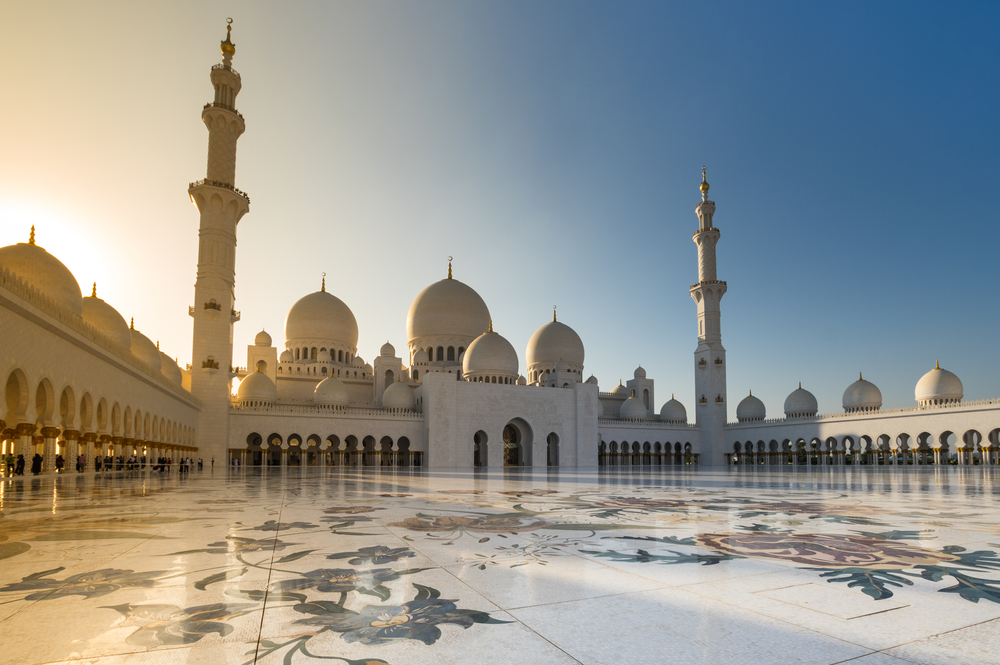
While mosques aren’t commonly thought of as temples, one definition of a temple is a house of worship, which a mosque certainly is. Muslims (who follow the Islamic faith) use mosques as a place to worship, and although technically no building is necessary to pray, mosques are used for communal prayer on Fridays of each week, on special holidays, and for vigils, funerals, and other ceremonies. They can even be used as homeless shelters, elementary schools, and burial places for revered figures of the church.
The Islamic faith is extremely widespread, and while the original mosques followed a square or rectangular blueprint with flat roofs and an enclosed courtyard, as the religion expanded so did the mosque’s architectural influences. As Islamic forces conquered more and more territory during their reign between 711 and 1492 CE, they inherited beautiful buildings, and rather than destroying them entirely, they converted many into mosques. Today there is no hard and fast rule when it comes to constructing mosques, but domes and ornate details are quite common.
If you are not a Muslim, you can still enter a mosque, though certain rules and etiquette do apply. All mosques have rules regarding garb and cleanliness, so you’ll need to dress modestly and make sure you’re squeaky clean before entering. Whether you are taking part in prayer or not, you must be respectful of those who are, and never walk in front of someone praying. Men and women are typically separated in mosques, usually by a partition or in separate rooms entirely.
15. Masonic Temples
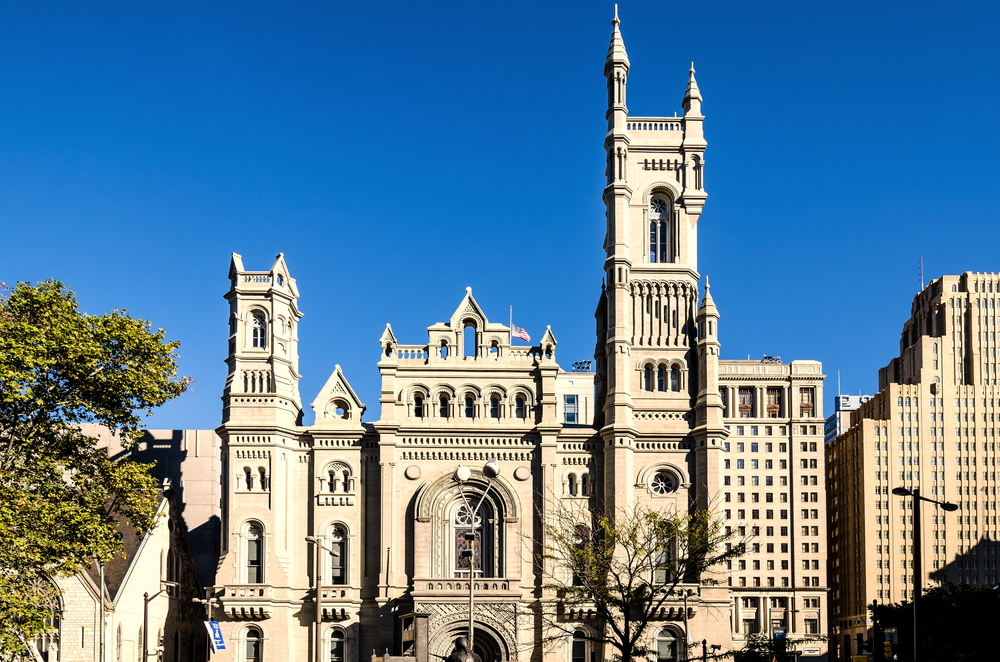
Masonic temples are the only temples on our list that aren’t religious structures or places of worship, but rather gathering places for Freemasons. The Freemasons is a fraternity that originated at the end of the 13th century and is an exclusive group for those who can trace their lineage to the local guilds of stonemasons.
If you’ve never heard of the Freemasons, don’t be alarmed. While in the 1930s nearly 15% of all males in the United States belonged to this fraternity, their numbers began to dwindle after the Great Depression. When the Freemasons were in their heyday, however, many grand masonic temples were constructed, and a few remain in use to this day, including the Dayton Masonic Temple in Ohio and the Detroit Masonic Temple, which is the largest in the entire world.
Many sects of the fraternity who could not afford the upkeep of the stately buildings were forced to sell them, and today they are used as hotels, nightclubs, and condominiums.
While masonic temples (also referred to as lodges) are not used for worship, the interiors are similar to those of other temples on our list, with kitchens and space for meetings. Some of the larger temples even boast libraries, concert halls, and museums.



